Best Drink to Lower Blood Pressure: Beetroot Juice Explained
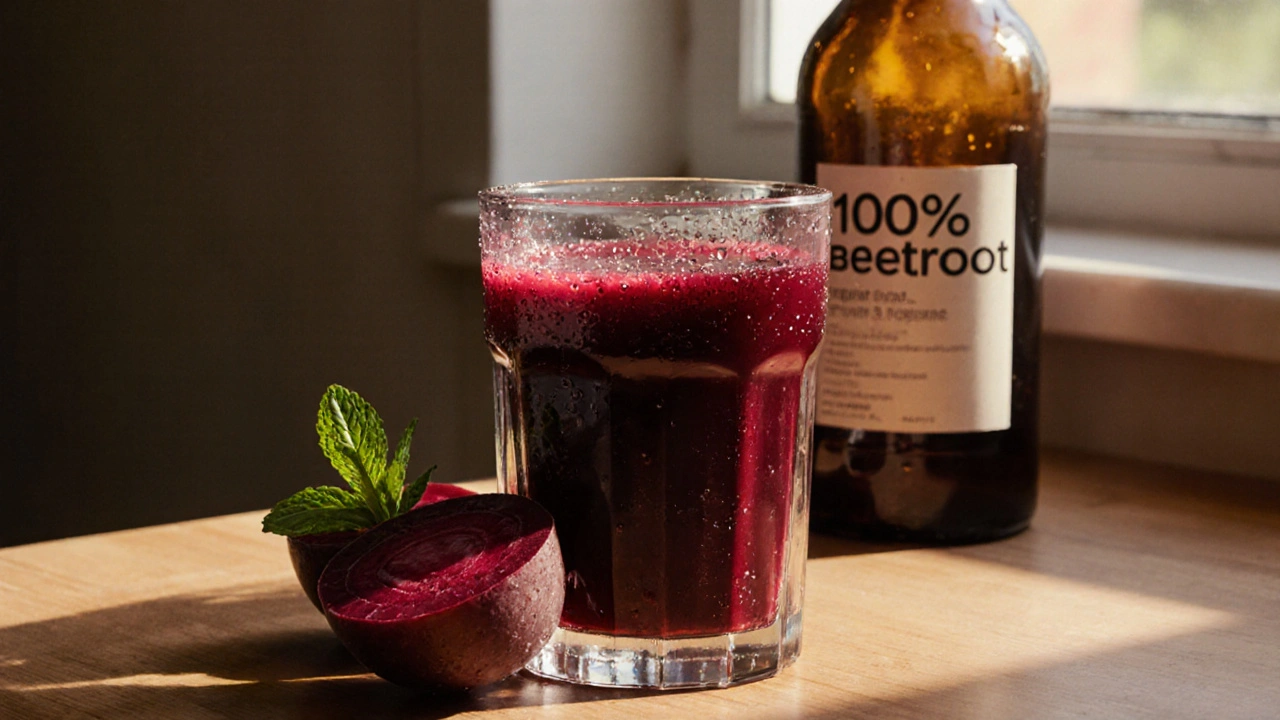
Blood Pressure Reduction Calculator
Estimate your potential blood pressure reduction from daily beetroot juice consumption based on clinical research. This calculator uses data from studies showing blood pressure changes after 2-4 weeks of regular consumption.
Expected Results
Based on clinical studies, beetroot juice can reduce systolic pressure by 4-10 mm Hg and diastolic pressure by 2-6 mm Hg after 2-4 weeks of daily consumption. Your results will vary based on individual factors and adherence to the recommended dosage.
People with high blood pressure (hypertension) are always hunting for a simple, tasty way to bring their numbers down without popping pills. The answer isn’t a fancy supplement - it’s a plain‑old glass of Beetroot Juicea deep‑red drink made from fresh beets that’s packed with natural nitrates. Below we’ll break down why this lower blood pressure drink works, how to choose the right brand, and what you can expect if you sip it daily.
Key Takeaways
- Beetroot juice is the top‑ranked beverage for reducing systolic and diastolic pressure.
- Its power comes from converting dietary nitrate into nitric oxide, a vasodilator that relaxes blood vessels.
- Clinical trials show a 4‑10mmHg drop after 2-4 weeks of daily consumption.
- Mix with water or fruit juice if the earthy taste is too strong.
- Watch for interactions with blood‑pressure medication and avoid excessive sugar.
Why Beetroot Juice Beats Other Drinks
When you compare popular “blood‑pressure‑friendly” drinks-green tea, hibiscus tea, pomegranate juice-the research consistently puts beetroot juice in the lead. A 2023 meta‑analysis of 12 randomized controlled trials (RCTs) found an average reduction of 7mmHg in systolic pressure for beetroot juice, versus 3mmHg for green tea and 2mmHg for hibiscus.
The difference isn’t just about antioxidants. Beetroot’s Nitrate content is among the highest of any fruit or vegetable-up to 300mg per 250ml serving. Once ingested, nitrate is converted by oral bacteria into nitrite, then into Nitric Oxidea molecule that relaxes smooth muscle in blood‑vessel walls. That relaxation widens the arteries (vasodilation) and lowers vascular resistance, which directly drops blood pressure.
How It Works: The Nitrate‑Nitrite‑NO Pathway
The pathway can be visualized as three steps:
- Ingestion: You drink nitrate‑rich beetroot juice.
- Conversion: Friendly bacteria on your tongue turn nitrate (NO₃⁻) into nitrite (NO₂⁻).
- Release: In the acidic environment of your stomach, nitrite becomes nitric oxide (NO), which enters the bloodstream and signals blood‑vessel smooth muscle to relax.
This cascade happens within minutes, which explains why some studies record an acute 5mmHg dip just 2‑3hours after a single serving.
Choosing the Right Beetroot Juice
Not all beetroot juices are created equal. Look for these attributes:
- Pure beetroot content: Ideally 100% beetroot with no added sugars or fillers. Some brands blend apple or carrot for flavor; that’s fine as long as beetroot stays the primary ingredient.
- Nitrate level: Labels rarely list nitrate, but a reputable brand will state “high nitrate” or give a mg per serving figure. Aim for at least 250mg per 250ml.
- Packaging: Dark glass bottles protect nitrate from light‑induced degradation. If you buy cartons, ensure they’re stored in a cool, dark place.
- Organic certification: Reduces exposure to pesticide residues that could interfere with the oral bacteria needed for conversion.
My go‑to brand (available in Australian supermarkets) meets all four criteria and costs about AUD4.50 per litre.
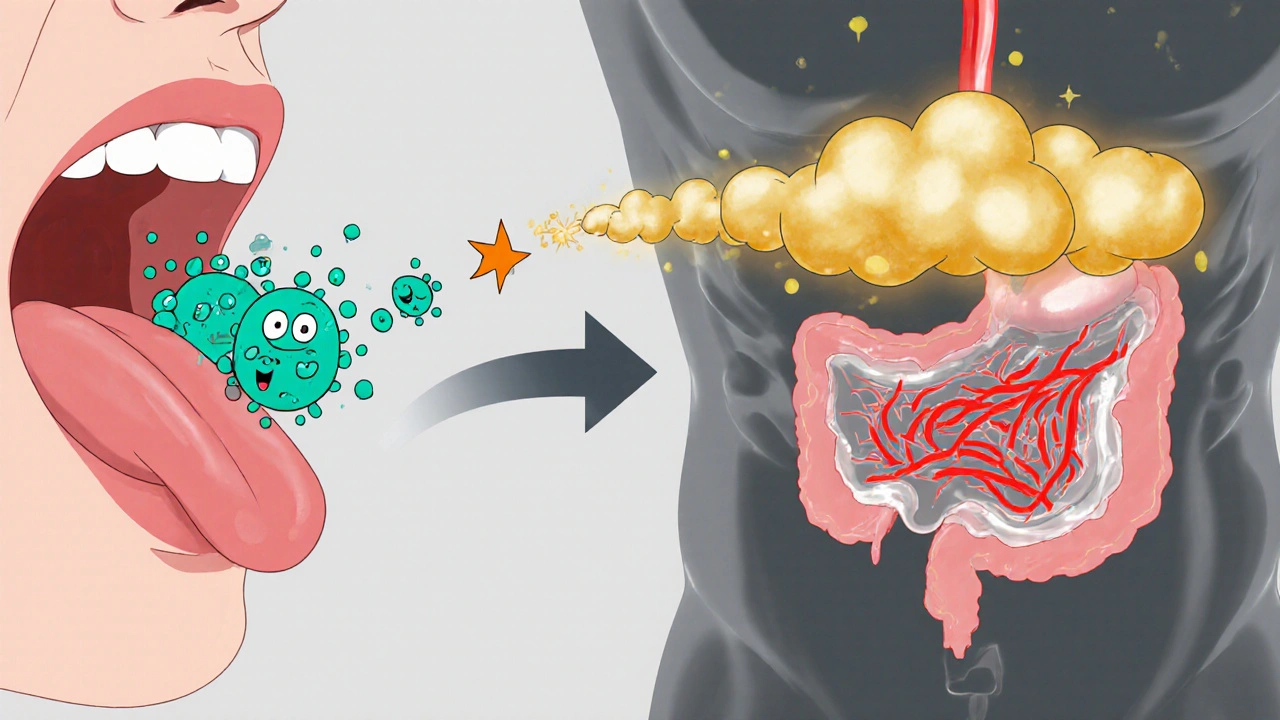
How Much to Drink and When
Most studies used a 250‑ml dose once daily. Here’s a practical schedule:
- Morning: 250ml mixed with 250ml water or orange juice (helps mask the earthy taste).
- Pre‑exercise: If you’re training, a second half‑dose 30minutes before activity can boost blood flow.
- Evening: Avoid a large dose close to bedtime if you’re sensitive to the mild stimulant effect of nitrates.
Stick to the routine for at least two weeks before measuring changes. Blood‑pressure monitors should be used at the same time each day for consistency.
Potential Side Effects and Interactions
Beetroot juice is safe for most adults, but be aware of:
- Beeturia: A harmless pink‑red tint in urine that can alarm the uninformed.
- Kidney stones: The oxalate content can be an issue for people with a history of calcium oxalate stones. Limit intake to 250ml per day.
- Medication clash: If you’re prescribed ACE inhibitors or nitroglycerin, the combined drop in pressure might be too steep. Consult your doctor.
Comparison with Other Popular Drinks
| Drink | Nitrate (mg/250ml) | Avg. Systolic ↓ (mmHg) | Avg. Diastolic ↓ (mmHg) | Notes |
|---|---|---|---|---|
| Beetroot Juice | 250‑300 | 7-10 | 4-6 | High nitrate, mild earthy taste |
| Green Tea | ~30 | 2-4 | 1-2 | Contains caffeine, rich in catechins |
| Hibiscus Tea | ~15 | 3-5 | 2-3 | Tart flavor, high anthocyanins |
| Pomegranate Juice | ~45 | 3-6 | 2-4 | High polyphenols, more sugar |

Real‑World Success Stories
Emma, a 52‑year‑old office worker from Brisbane, recorded a drop from 148/92mmHg to 132/80mmHg after a 6‑week regimen of 250ml beetroot juice daily, alongside a low‑salt diet. She noticed a reduction in headaches and felt more energetic during her morning walks.
Another case: a small Australian cohort of 30 hypertensive patients participating in a university‑run trial reported a 5.5mmHg average systolic reduction after 4 weeks, with no adverse events.
Frequently Asked Questions
Frequently Asked Questions
How much beetroot juice should I drink per day?
The sweet spot for most adults is 250ml (about one cup) of 100% beetroot juice each day. Some studies used two servings, but that can increase oxalate intake.
Can I mix beetroot juice with other beverages?
Sure. Mixing with water, apple juice, or a splash of lemon helps cut the earthy flavor without diluting nitrate content. Avoid heating the juice, as high temperatures degrade nitrate.
Is beetroot juice safe for people on blood‑pressure medication?
Generally yes, but the combined effect can sometimes push pressure too low. Talk to your doctor before adding it to your regimen, especially if you’re on ACE inhibitors or diuretics.
What’s the difference between nitrate and nitrite?
Nitrate (NO₃⁻) is the form found in vegetables. Oral bacteria convert it to nitrite (NO₂⁻), which then transforms into nitric oxide (NO) in the stomach. NO is the active molecule that relaxes blood vessels.
Can I get the same benefits from beetroot powder?
Powders can work if they contain the same nitrate concentration, but many commercial powders lose potency during processing. Freshly‑pressed juice remains the most reliable source.
Next Steps: Put the Knowledge into Action
1. Pick a certified, high‑nitrate beetroot juice brand.
2. Buy a bottle and set a daily reminder (morning is easiest).
3. Track your blood pressure with a home monitor for at least two weeks.
4. Review the numbers with your GP, especially if you’re on medication.
5. Adjust dosage or combine with other lifestyle changes (lower salt, more exercise) as needed.
By integrating this single, natural drink into your routine, you can tap into a science‑backed method for taming hypertension without relying on extra pills.

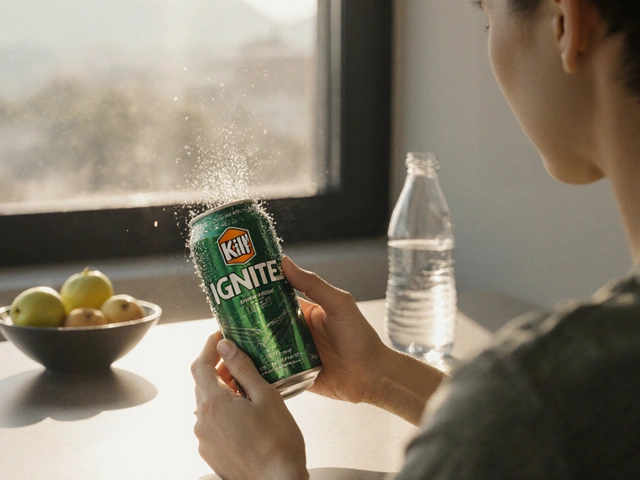
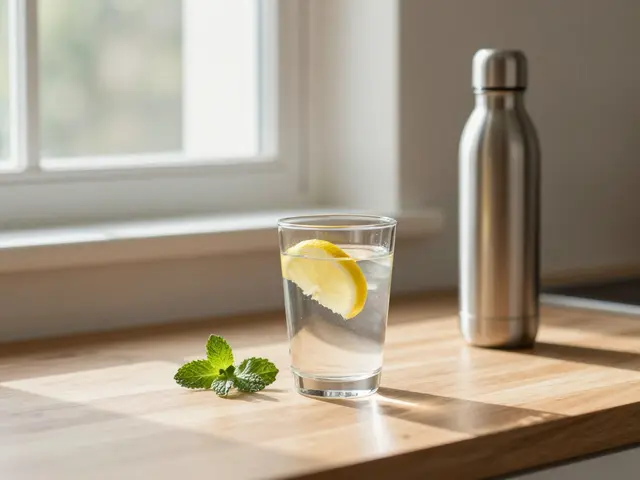
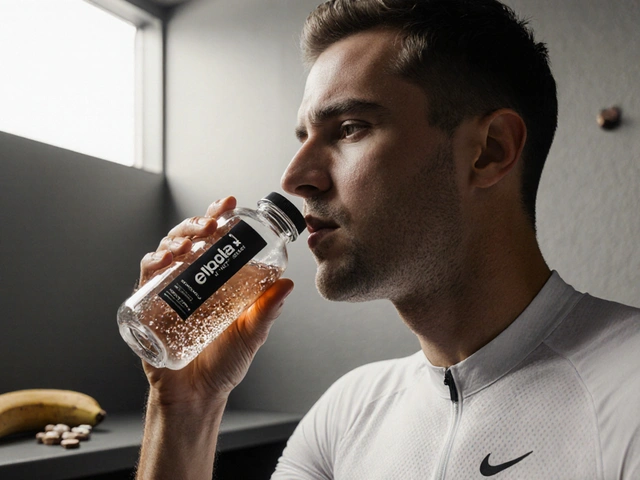


Comments (10)
James Winter
13 Oct 2025
Beet juice is just a fad, stick to real meds.
Aimee Quenneville
13 Oct 2025
Oh great, another miracle drink-because we all love beet‑flavored water!!!
Sure, it’s packed with nitrates, but you could just eat a beet instead of choking down a weird juice.
If you’re into health hacks, go ahead, but don’t expect it to replace proper meds.
Seriously, it’s a nice supplement, not a silver bullet.
Patrick Tiernan
13 Oct 2025
Beetroot juice? Yeah, it’s trendy, but the hype is louder than the science.
I mean, 7 mmHg drop sounds cool but you’re still drinking a beet‑scented swamp.
People love to parade around with glass bottles like they’re winning a health lottery.
If you enjoy the taste and have the budget, fine, but don’t act like it’s a miracle cure.
Just remember, it’s one piece of the puzzle, not the whole picture.
Patrick Bass
13 Oct 2025
Those who enjoy beet juice should balance it with proper diet and doctor advice.
Ashley Kuehnel
13 Oct 2025
Hey folks! If you’re thinking about adding beetroot juice to your routine, start with a small 100‑ml serving and see how your body reacts.
Watch out for beeturia – that pink‑red urine can look alarming but it’s harmless.
Also, if you have a history of kidney stones, keep the intake under 250 ml per day because of the oxalates.
Mixing the juice with a splash of orange or apple juice can tame the earthy flavor without killing the nitrate boost.
Most importantly, keep a consistent measurement time for your blood pressure readings – same morning hour, same arm.
And of course, chat with your GP especially if you’re on ACE inhibitors or other BP meds.
adam smith
13 Oct 2025
Dear Ashly, Thank you for the practical advice. The tip about timing the measurement is especially valuable. Please continue to share such detailed guidance.
Mongezi Mkhwanazi
13 Oct 2025
Let us pause, dear readers, and contemplate the profound implications of a mere vegetable‑derived libation being touted as a panacea for hypertension, a condition that has plagued humanity for millennia; indeed, the notion that a crimson elixir can usher in cardiovascular harmony is both exhilarating and, perhaps, a shade too simplistic, yet the scientific underpinnings-namely, the nitrate‑nitrite‑NO cascade-cannot be dismissed outright, for nitric oxide, that fickle messenger of vasodilation, has been lauded in countless studies, and its role in modulating vascular tone is unequivocally established; however, one must also consider the broader context, including dietary patterns, lifestyle, genetic predispositions, and the inevitable variability in nitrate content across different beetroot cultivars, which, as any discerning connoisseur of nutrition knows, can render a single serving a volatile source of active compounds.
Furthermore, the metabolic fate of dietary nitrates is contingent upon oral microbiota, a factor often overlooked in popular discourse, and alterations in mouth flora-perhaps due to excessive antiseptic use-may blunt the conversion efficiency, thereby diminishing the expected hemodynamic benefit.
From a practical standpoint, the potential for beeturia, while benign, may cause undue alarm among patients unacquainted with this phenomenon, and the oxalate load, a non‑trivial concern for those predisposed to calcium oxalate nephrolithiasis, mandates a measured intake.
Equally important is the interaction with antihypertensive pharmacotherapy; concomitant use of ACE inhibitors, ARBs, or nitrates like nitroglycerin could precipitate an overshoot in blood pressure reduction, occasionally leading to symptomatic hypotension.
Thus, a collaborative approach with one's healthcare provider is indispensable.
Nevertheless, for individuals seeking a natural adjunct, beetroot juice offers a convenient, low‑cost option, especially when sourced in dark‑glass bottles that safeguard nitrate stability against photodegradation.
The recommendation to dilute the juice with water or a modest splash of fruit juice addresses palatability without compromising nitrate bioavailability, provided the mixture is not subjected to heat, which would degrade the active molecules.
In summary, while beetroot juice is not a silver bullet, its inclusion as part of a comprehensive, evidence‑based hypertension management plan-encompassing reduced sodium intake, regular physical activity, and weight control-may yield incremental yet meaningful reductions in systolic and diastolic pressures, thereby contributing to overall cardiovascular risk mitigation.
Mark Nitka
13 Oct 2025
I agree with the thorough analysis; beetroot juice can be a useful add‑on when used responsibly.
kelvin kind
13 Oct 2025
Keep it simple – a daily cup is enough, no need to overcomplicate.
Ian Cassidy
13 Oct 2025
Beet juice brings nitrate into the bloodstream, boosts NO, relaxes vessels – short and sweet.